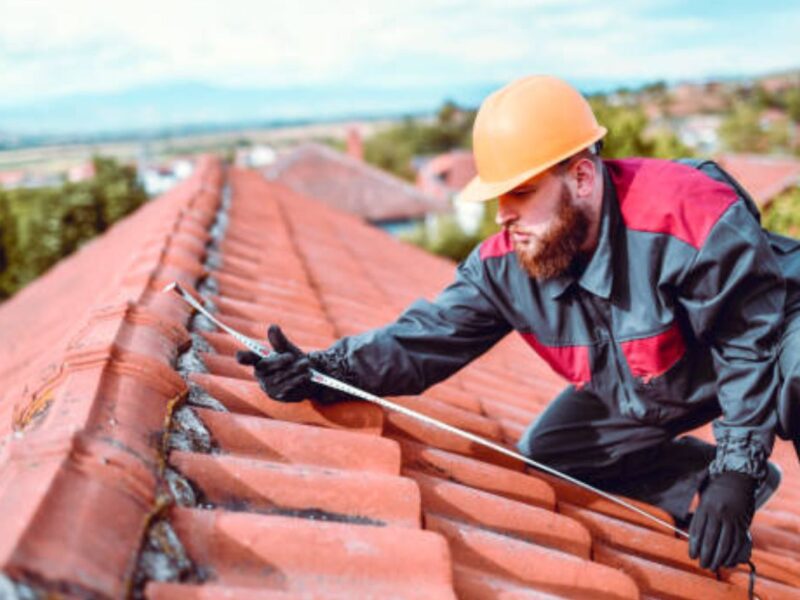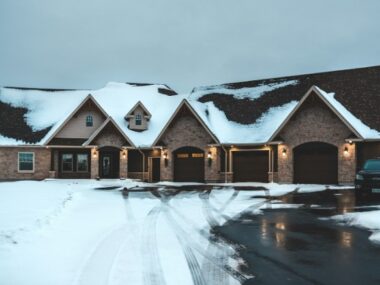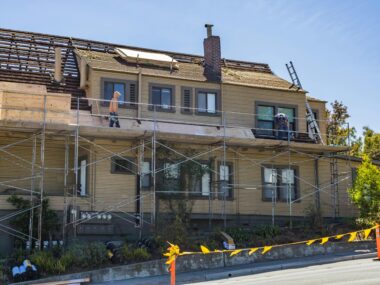Ever felt a pang of anxiety when you spot a leak in your roof? I’ve been there. It’s a sign that you’re about to dip into your savings for a roof repair. But how much should you really set aside for this task? Let’s dive into the world of roof repairs and unravel the mystery behind the costs.
Understanding the cost of roof repair is more than just getting a quote from a contractor. It’s about knowing what factors influence these costs and how to budget effectively. From material costs to labor charges, I’ll help you navigate the sea of numbers and give you a clearer picture of what to expect when your roof needs a fix.
So, whether you’re a homeowner facing a roof repair or just a curious reader, stick around. You’re about to become savvier about roof repair costs and budgeting.
Understanding the Repair Costs
Digging deeper into roof repair expenses, let’s explore the factors impacting these costs. We’ll discuss various types of roof damage and their respective costs, along with the diverse pricing elements in roof repair.
Different Types of Roof Damage and Their Costs
Roof damage ranges from minor issues, like missing shingles due to wind damage, to more substantial problems like structural damage from a fallen tree. For example, replacing a few shingles might only cost around $200, while handling structural issues could cost upwards of $1000.
It’s crucial to consider the nature of the damage when anticipating roof repair costs. Slight damages like leaks or minor holes might cost less, typically ranging from $300 to $500. However, more significant damages such as sagging, widespread leaks, or severe storm damage could inflate repair costs to between $2500 and $5000, or even more. Of course, these costs are approximate and can vary based on several variables, which we’ll discuss next.
Pricing Variables in Roof Repair
The actual cost of roof repairs isn’t determined solely by the type and extent of the damage. There are other important variables, including the type of materials used, labor charges, and your location.
- Materials: Higher quality materials will increase the repair costs. Slate and tile roofs, for instance, are generally pricier to repair than asphalt shingles due to the cost of the materials and specialized labor required.
- Labor Costs: Depending on the complexity of the repair, labor charges may be substantial. You’ll pay more if your roof has a steep pitch, is difficult to access, or the repair requires unique skills.
- Location: Your geographical location can impact the cost of roof repair. Urban areas with a high cost of living typically have higher labor rates than rural locales.
By understanding these factors, you can anticipate the costs associated with roof repair more accurately and set a realistic budget. Remember, neglecting minor repairs can lead to large-scale damages that could cost significantly more to fix.
Determining the Cost of Labour for Roof Repair
The cost of labour for a roof repair job often accounts for a significant portion of the total expenses. Let’s delve deeper into the elements that can dictate these costs.
Factors Influencing Labour Costs
Several aspects can directly or indirectly impact the overall labour costs involved in a roof repair job. Here’s some critical factors that might affect the final bill:
- Level of expertise – The greater the roofer’s expertise, the higher the labor rate might be. For instance, projects involving intricate architectural elements often need veteran, high-skilled craftsmen and come with a larger price tag.
- Extent of damage – If your roof damage is extensive, it naturally demands more hours of work. Tasks like dealing with sizable leaks or structural damage not only eat up time but also require special skills, potentially hiking up labour costs.
- Geographical location – The cost of roof repair service in Beverly Hills is likely higher than in a small town in the Midwest. The differences in cost of living, along with local market dynamics, into rates for roofing labour can vary widely.
- Type of roofing material – Different roofing materials require unique installation and repair techniques. Slate, tile, or metal roofs typically demand specialized skills and tools, and hence, may cost more to repair.
- Workplace safety measures – Working on steep surfaces or multistory buildings introduces an element of risk. Roofers who undertake such jobs need to follow stringent safety measures and procedures, which are factored into the price tag.
So, identifying these factors beforehand can offer a realistic estimate of the expected labor costs for your roof repair, and help you plan your budget effectively.
Materials Involved in Roof Repairs
In understanding the total cost of roof repair, it’s integral to examine the materials used. These vary widely not only in cost but also in durability and aesthetics, influencing the immediate and long-term expenses of roof repair.
Costs of Common Roofing Materials
Different types of roofing materials carry different costs. Asphalt shingles, popular due to their low cost and versatility, generally cost around $100 to $500 per square foot. Metal roofing, on the other hand, offers longevity but comes at a higher price range of $150 to $600 per square foot.

Clay and concrete tiles impart a distinctive aesthetic, yet their cost ranges between $300 to $700 per square foot. Finally, slate tiles boast of high durability, but carry a hefty price tag between $500 to $1,000 per square foot.
|
Roofing Material |
Cost per square foot |
|
Asphalt Shingles |
$100 – $500 |
|
Metal Roofing |
$150 – $600 |
|
Clay/Concrete Tiles |
$300 – $700 |
|
Slate Tiles |
$500 – $1,000 |
Choosing the Right Material for Your Budget
Picking the right roofing material for your situation depends on your budget and needs. If immediate cost is your primary concern, asphalt shingles may suit you best. For a balance of durability and cost, metal roofing might tick the boxes. If aesthetics play a crucial role and you’re prepared for a substantial investment, clay, concrete or slate tiles could work well. Remember, your choice of material can have a significant impact on the overall cost of your roof repair. Plan accordingly to get the most value without straying from your budget.
Insurance and Roof Repairs
Transitioning from the costs of materials and labor in a roof repair, it’s time to delve into another crucial aspect: insurance. How does insurance come into play, and what financial impacts can you expect when making a claim?
When Does Insurance Cover Roof Repairs?
Typically, home insurance policies cover roof repairs when damage results from an uncontrollable event, such as a fire or vandalism. However, it doesn’t usually cover damage due to wear and tear or improper maintenance. For instance, if a tree falls on your roof during a windstorm, your insurance company will likely shoulder the repair costs. On the other hand, if roof damage occurred due to neglect like algae growth or missing shingles, chances are you’re footing the bill.
Impact of Claims on Your Insurance Rates
Submitting a claim for your roof repair leads to an unavoidable question: how does this affect your insurance rates? Every insurance company has its rating algorithm, generally incorporating variables like claim history, time since last claim, geographic location, and nature of the claim. For example, filing a claim for damage from a localized event, like a fire, might have a lower impact on your rates than a claim related to widespread storm damage. That’s because insurers tend to view widespread damage events as more likely to repeat, increasing risk.
So, while each situation differs, it’s safe to say that making a claim on your roof repair can lead to an increase in your insurance premiums. However, you shouldn’t hesitate to make a claim if it’s necessary. It’s what your insurance is there for, after all. Balancing your immediate repair needs against potential future costs is key. You need to weigh the pros and cons, considering factors like your financial state, extent of the roof damage, and potential premium increases.
Conclusion
Navigating the cost of roof repair can be tricky, but it’s not insurmountable. Armed with knowledge about the factors that impact repair costs, you’re now better equipped to make informed decisions. Remember, the type of damage, labor costs, and your choice of roofing materials all play a significant role in the final bill. When it comes to insurance, it’s not always a clear-cut solution. While it can cover costs from unforeseen events, wear and tear typically don’t make the cut. Filing a claim may also bump up your premiums, but it’s a balancing act between immediate needs and future expenses. This journey may seem daunting, but with careful planning and budgeting, you can successfully navigate the path of roof repair expenses.







